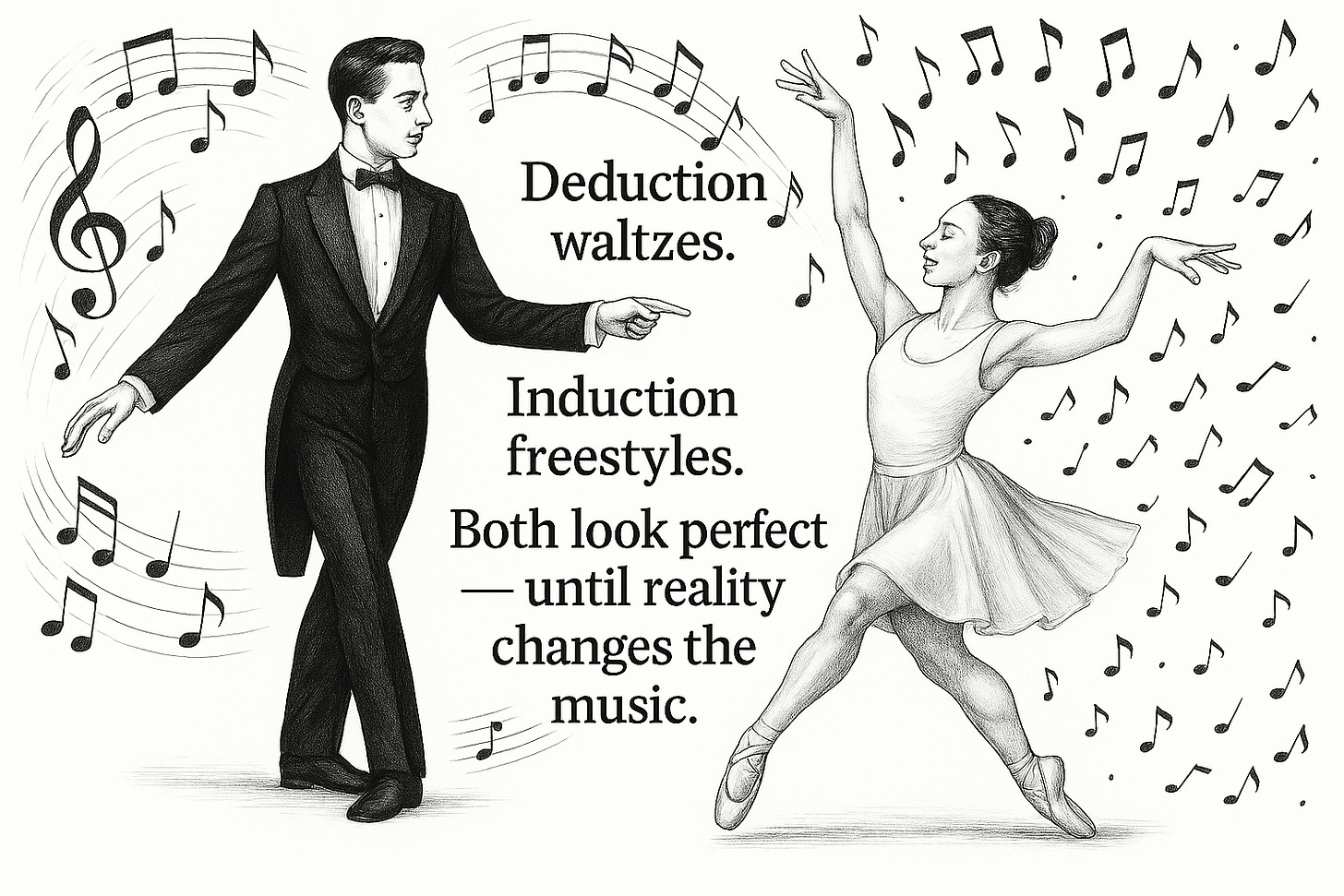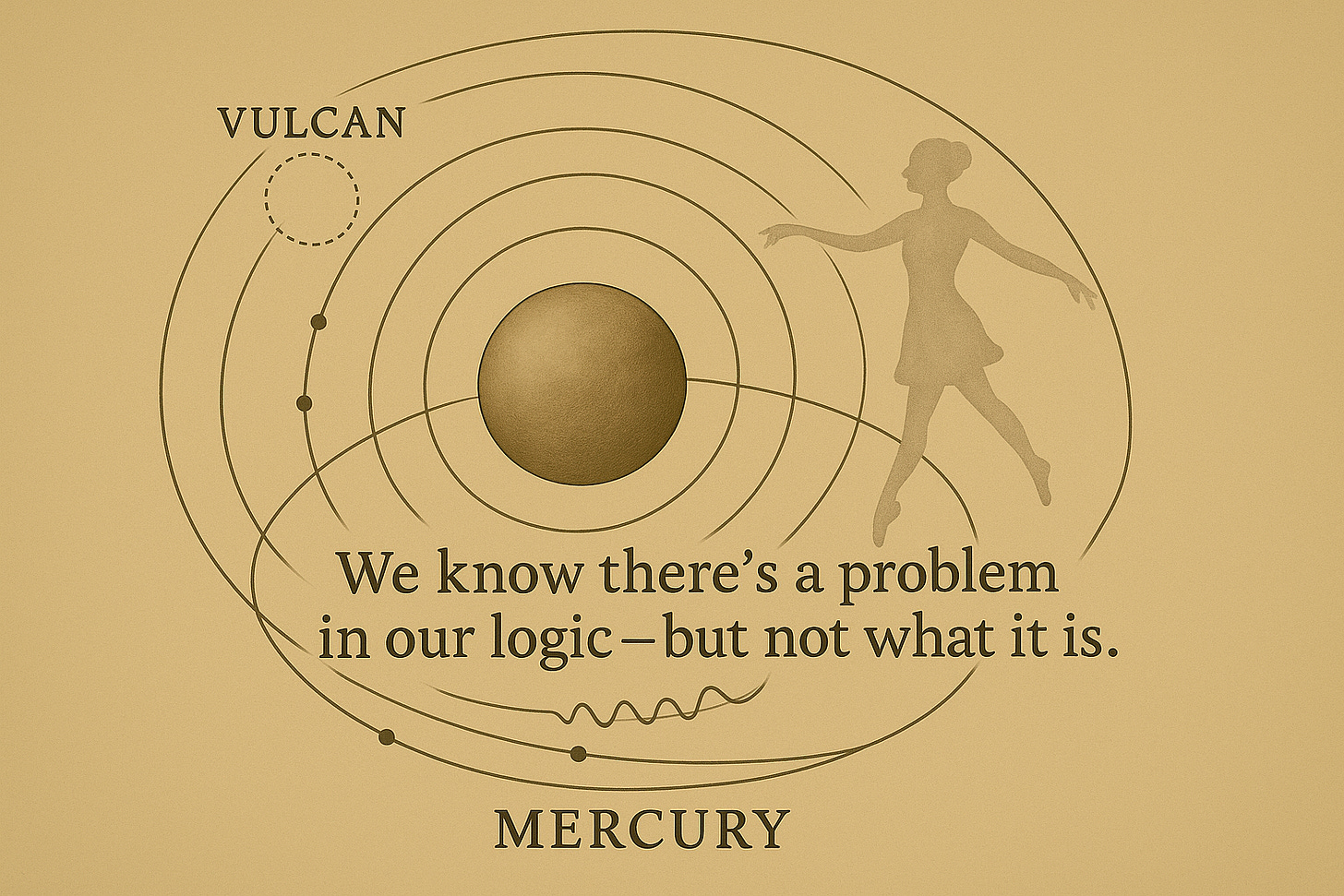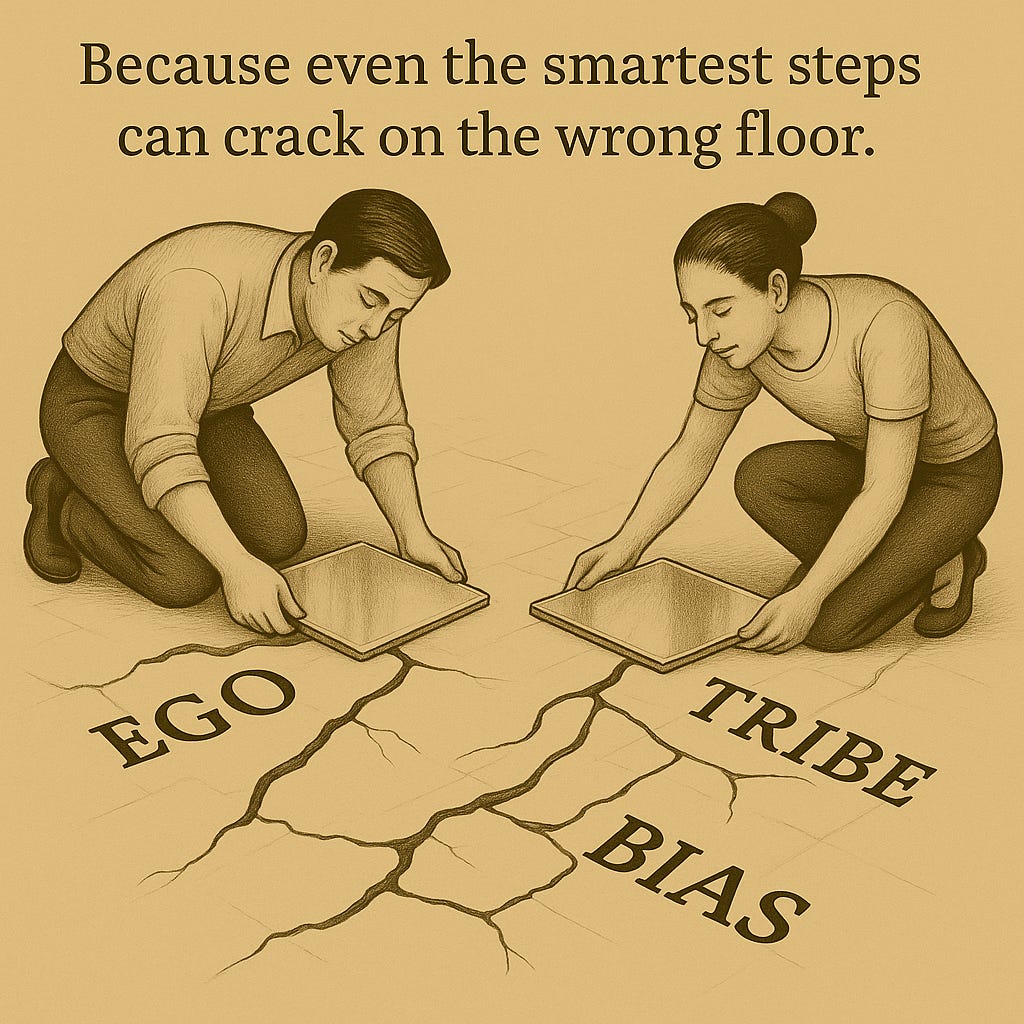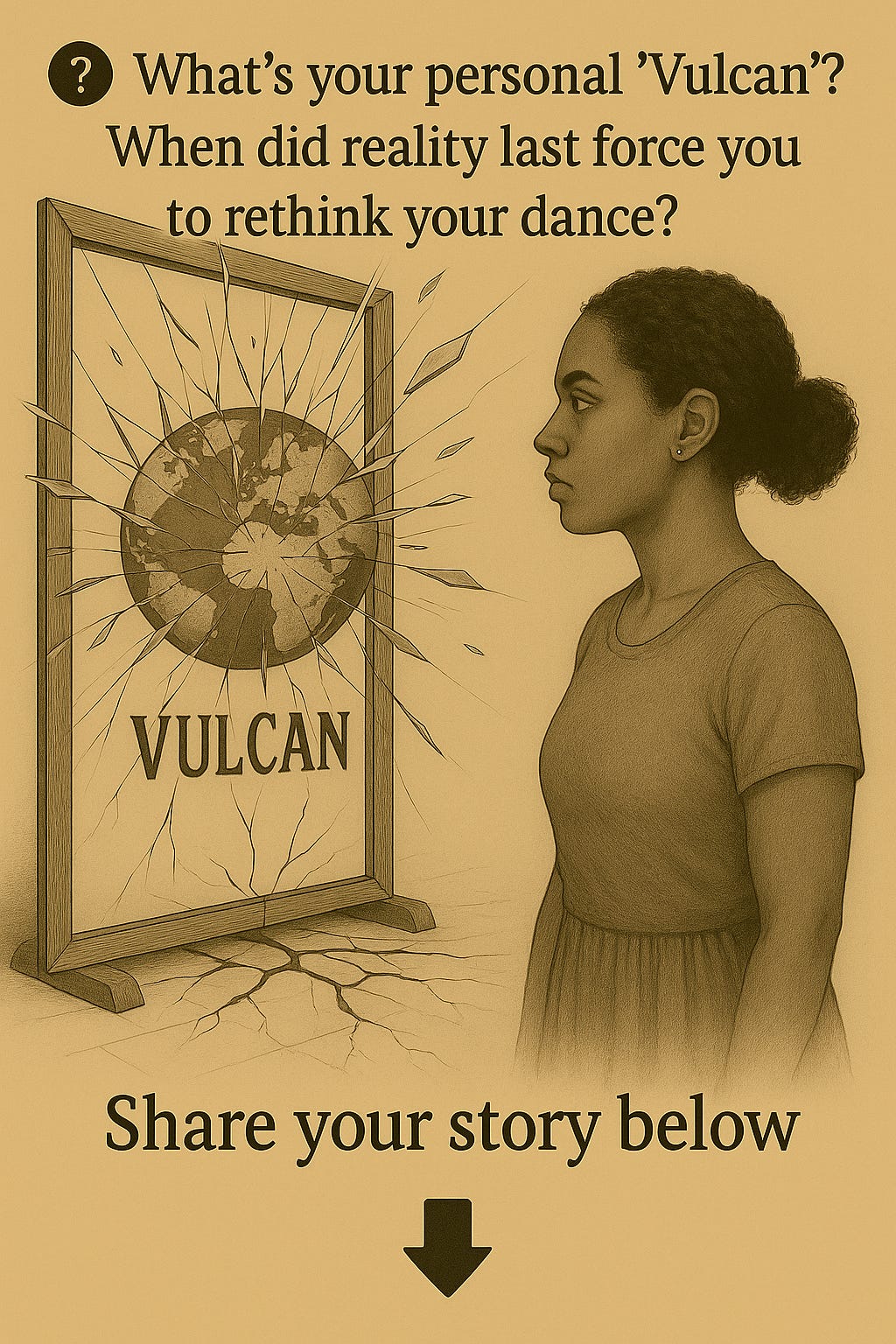The Dance of Logic: Learning to Thinking Beyond Certainty
Navigating Thought: Mastering Logic and Rationality in a Noisy World
Wayne Boatwright — Building Tools for the Uncharted
I don’t write to give you answers. I build instruments. These are tools for thinking that help you navigate the places where old maps fail.
These tools are born from years spent dismantling and rebuilding my own mind, learning to separate the maps we inherit from the territory we actually live in. They’re not meant to be admired on a shelf. They’re meant to be used and tested against your own life, bent under pressure, and kept only if they hold.
Some are compasses for finding clarity when truth feels slippery. Some are knives for cutting through noise to what endures. All are built for the same purpose: to help you think in ways you didn’t know you could.
If you’ve felt the ground shift under your assumptions, you’re in the right place. The known world ends here. Pick up a tool. Let’s see what survives the journey.
"The mind is not a vessel to be filled, but a fire to be kindled." — Plutarch
Not long ago, after a marathon weekend lost in Martha Wells’ Murderbot Diaries (books first, then the TV series) I had a vivid dream. I was delivering a talk on logical fallacies, and Murderbot was trailing me like a skeptical shadow, filing terse “security logs” on everything I said. For the uninitiated, Murderbot is a sardonic, semi-rogue security unit that would rather watch endless serials than deal with fragile, illogical humans, yet keeps reluctantly saving us all the same. When I woke up, I realized that voice was precisely what we need when exploring logic. A dry, slightly exasperated AI narrator to flag the moments where our neat human reasoning trips over itself.
Logic: The Dance Floor We Trust
In our world of algorithmic smugness and instant expertise, logic seems like the ultimate stabilizer. It’s tempting to see it as a machine: feed in assumptions, press the button, and out comes a perfectly packaged conclusion, shrink-wrapped for social media. But genuine reasoning isn’t mechanical. It’s a dance. Sometimes graceful, often clumsy, always requiring you to adjust your steps when the floor tilts unexpectedly. It demands humility, because no matter how elegant your movements, they can still lead you straight off the stage if the music changes.
//Security Log: Humans appear to treat certainty like a weighted comfort blanket. Useful only on floors that don't vanish.
That’s the paradox: logic feels like solid ground precisely because it is internally consistent. But flawless internal consistency means nothing if it’s built on assumptions that have quietly rotted underneath.
This essay explores how logical thinking truly works. Not as a rigid set of rules, but as a living process that helps us navigate from known truths to profound surprises. It also explores why logic, paradoxically, requires humility and the willingness to see our deepest convictions undone.
Deduction Waltzes, Induction Freestyles
Picture the grand ballroom of ideas. Over here, deduction glides with aristocratic confidence. It starts with sweeping premises and waltzes toward precise conclusions. Sherlock Holmes spotting mud on your boots and concluding you came from the moors? Pure deduction. If the premises are true, the outcome is nearly unassailable. Across the hall, induction freestyles. It takes scattered clues (patterns in the stars, strange planetary wobble) and dares to generalize. It notices Uranus drifting oddly and wonders if an unseen planet is tugging at it. Induction stitches broad patterns out of scattered evidence, hoping the past will predict the future. It’s daring, creative and oh so risky.
Together, deduction and induction choreograph the mental routines that let us navigate life. Every day, we switch between these steps. We spot trends in stock prices (induction), then apply rules to decide our investment strategy (deduction). They turn random data into predictions and rules, so we’re not paralyzed at every decision point. But change the underlying beat, add a new fact or unearth a hidden force, and suddenly those same polished steps can carry you somewhere entirely unexpected. Change the story, and suddenly the same old facts look different.
Abduction: the third path
Alongside deduction and induction sits a quieter tool; abduction, the habit of guessing the most plausible cause from scant clues. It sparks bold ideas that deduction and induction later stress-test.
//Security Log: Dance floor assessed as slick. Probability of multiple human faceplants remains high.
History: Humanity’s Blooper Reel
If being wrong still embarrasses you, take solace in knowing history is basically humanity’s blooper reel. The flat Earth was perfectly logical when you only had eyes and the horizon. Watch a ship vanish hull-first, then its mast: of course it fell off. Or perhaps it was devoured by monsters, equally sound in a pre-compass age. Later, sailors returned alive from voyages that should have dropped them into oblivion, unsettling the neat story. Columbus famously gambled west to reach east. Driven less by geometry than desperation not to die bankrupt. Telescopes then revealed that the “wandering stars” were actual planets circling the sun. Copernicus gently nudged Earth off its pedestal. Kepler fitted the orbits into ellipses. Newton locked it all into a majestic gravitational ballet. It looked flawless. A cosmic waltz, elegant and entirely predictable. Until Mercury started to misstep.
//Security Log: Historical data indicates repeated 'universe far stranger than initial models' episodes. Recommend standard caution.
By the 19th century, Newton’s equations were so trusted they practically had diplomatic immunity. They’d already found Neptune by watching Uranus wobble. So when Mercury’s orbit precessed slightly beyond Newton’s tolerance, logic quickly laced up its shoes. Rule: planetary wobbles imply hidden gravitational pulls. Fact: Mercury is wobbling. Flawless conclusion: there must be another planet, Vulcan, inside Mercury’s orbit. Observatories worldwide devoted precious telescope hours to hunting Vulcan. Some astronomers triumphantly reported seeing it; likely sunspots, atmospheric distortion, or the eager human mind projecting patterns onto noise. For decades, Vulcan was not just a hypothesis but a known truth, complete with journal papers and professional reputations staked on its existence. Then Einstein arrived, proposing that gravity wasn’t even a force but the warping of spacetime itself. Under this radical choreography, Mercury’s orbit made perfect sense.
Vulcan evaporated like dew in sunlight. The planet Vulcan never existed—it was a ghost conjured by the gravitational math of the day. Only with Einstein's curvature of spacetime did Mercury's motion make sense. The facts didn't change. Our interpretation did.
//Security Log: Reality does not sign contracts promising to honor your equations. Recommend humility recalibration.
When Logic Trips: The Case of Vulcan
Vulcan remains one of history’s best reminders that logic, even executed flawlessly, is only as good as the assumptions beneath its dance floor.
Think we’ve stopped building Vulcans? That’s endearing. Today we create them daily, just with fancier credentials. Economists build pristine models of humans who never irrationally panic-buy toilet paper or invest in memes. Pop psychology churns out one-size-fits-all frameworks that confidently explain why you eat chocolate at midnight, while ignoring the billion conflicting data points. Media bubbles craft hyper-consistent narratives that tie every hiccup in history to a single ideological thread. Why? Because it’s cognitively easier to bolt a shiny new ghost onto your worldview than to tear up the entire floor and start laying tiles again. Certainty comforts. Doubt drains glucose, literally. Neuroscience shows your brain has to work harder, consuming more metabolic energy, when forced to reconsider its favorite patterns.
//Security Log: Humans favor patching familiar floors over admitting they’re dancing in the wrong ballroom. Murderbot would just upload new coordinates.
The Mind’s Favorite Stories
Jonathan Haidt’s metaphor captures it best: your mind is an Elephant (emotion) steered by a Rider (reason). But the Rider’s real job isn’t to choose the path. It’s to provide eloquent justifications for wherever the Elephant already decided to wander. Daniel Kahneman’s experiments proved these shortcuts aren’t design flaws; they’re energy-saving features. Fast vs. slow thinking: Pattern-seeking System 1 reacts first; rule-checking System 2 steps in only when the stakes justify the glucose burn. Douglas Hofstadter admired how we become “little miracles of self-reference,” forever crafting graceful stories to protect fragile selves from awkward truths.
//Security Log: Logic frequently functions as internal PR for the ego. Accuracy status: variable.
Which means: logic alone isn’t enough. We can dance perfectly in circles, never once stepping into reality.
The genius of science is that it anticipates humiliation. It builds models, then actively tries to break them. Newton’s waltz gave way to Einstein’s unexpected curvature. One day, Einstein may yield to some future quantum geometry we can’t yet visualize. Facts + Theory = Provisional Truth. The next scrap of data could flatten your entire routine. That’s not science failing. That’s exactly how it succeeds.
//Security Log: Recommend keeping emotional attachments to current routines minimal. Future updates may invalidate this sequence.
Testing, Failing, Learning: The Real Dance
If we sketched this on a napkin, it might look like: LOGIC (builds neat steps) ↓ RATIONALITY (checks if floor is real) ↓ REALITY TESTING (tries moves on the ground) ↓ REFINED LOGIC (learns sharper routines) And so the cycle continues, ideally slightly more graceful each time.
Belief-revision loop (five moves)
1. Notice tension.
2. Question the premise.
3. Hunt disconfirming data.
4. Re-weight your confidence, not your identity.
5. Act, watch, repeat.
So how do we stay rational, not just logical, in our intellectual footwork? Audit your assumptions. Seek ideas that seem laughably wrong. Use frameworks that force new angles. Fail with intention. Edison didn’t fail 10,000 times; he mapped exactly what wouldn’t work until success had no place left to hide.
//Security Log: Cognitive load increasing. Recommend additional snacks for optimal processing.
In the end, logic isn’t about building invincible routines. It’s about loving reality enough to keep testing, keep doubting, keep dancing, even if it means discarding your favorite moves when the floor suddenly vanishes beneath them. That’s how logic kindles the mind: not by stuffing it with rigid patterns, but by pushing it back into the music, curious and a little reckless, willing to risk looking foolish for a deeper truth.
Logic vs Rationality: “Logic keeps your inferences valid; rationality keeps your choices aligned with your goals. They overlap but never merge.”
//Security Log: Humans: fragile, occasionally profound. Truth: serenely indifferent. Recommend continuing sequence regardless.
So Where Are Your Vulcans?
What “known truths” in your life might be personal Vulcans? When did discomfort last actually change your steps? What story could you revise this week by inviting uncertainty onto the floor? Because if history shows anything, it’s that we are always building new ghost planets. The only way to keep from waltzing into empty air is to keep checking if the ground is still there.
Appendix: The Dance of Logic Feedback Loop
🧭 THE DANCE OF LOGIC: FEEDBACK LOOP SUMMARY
Stage: Logic 🧠 Builds tight, internally consistent steps. Stage: Rationality 🔍 Audits these steps against broader context. Stage: Reality Testing 🌍 Collides beliefs with the actual world. Stage: Refined Logic 🪞 Learns sharper moves, updates flawed models. ✅ CYCLE REPEATS: - New evidence tweaks the choreography. - Next iteration: ideally less awkward, more accurate.
🚨 Murderbot Memo: "Recommend low attachment to current dance routines. Patch notes from reality may break them."
🧬 RECURSIVE DIAGRAM — YOUR COGNITIVE FEEDBACK LOOP
+------------------+ | LOGIC | | builds neat | | internal steps | +------------------+ | ↓ +------------------+ | RATIONALITY | | checks internal | | steps vs context | +------------------+ | ↓ +------------------+ | REALITY TESTING | | tries moves on | | actual ground | +------------------+ | ↓ +------------------+ | REFINED LOGIC | | learns sharper | | choreography | +------------------+ | ↑ +------------+------------+ | loop continues: less | | clumsy, more humble | +-------------------------+
🪞 FEEDBACK LOOP MANTRA
“Dance carefully, test boldly, doubt joyfully. Build your logic, then smash it against reality. Step again — lighter, clearer, closer to truth.” //Security Log: Humans remain fragile, occasionally profound. Continue sequence regardless.







